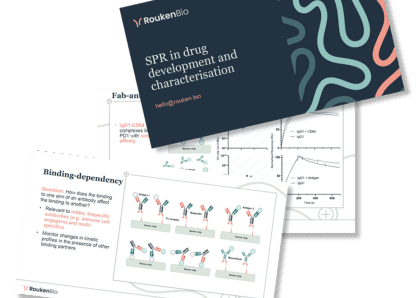The Role of FcRn in immunology and therapeutics
The Neonatal Fc Receptor (FcRn) shows promising therapeutic potential in autoimmunity and other conditions.

|
April 22, 2024
|
6 min read
The Neonatal Fc Receptor (FcRn) plays an important role in passive immunity, transporting Immunoglobulin G (IgG). This intricate interplay between FcRn and IgG shows promising therapeutic potential in autoimmunity and other conditions.
What is FcRn?
FcRn is a fascinating molecule with profound implications in immunology and therapeutics.
Initially known for its role in transporting maternal IgG to pre- and neonatal mammals (passive immunity), FcRn has emerged as a central player in regulating the IgG antibody and albumin serum levels through a process known as FcRn-mediated recycling (Figure 1).
The receptor acts as a transporter – maintaining the tissue distribution of IgGs by moving them across polarised endothelial cells and a wide array of epithelial cells. It is understood that FcRn mediates either uni- or multi-directional IgG transfer. This has important implications in the delivery of therapeutics.
Additionally, FcRn plays a role in active immunity. Working with FcУ-receptors (FcγRs), it conducts various immune-related activities including the enhancement of antigen presentation to CD4+T cells, and antigen cross-presentation to CD8+T cells.
FcRn distribution
FcRn is widely distributed throughout human body tissues. In the immune compartment, FcRn levels are particularly high in myeloid cells such as monocytes, tissue-resident macrophages, dendritic cells, and neutrophils. Interestingly, while low levels of FcRn are found in B cells, no FcRn expression has been observed in T cells or natural killer cells.
FcRn is predominantly located within intracellular vesicular networks but is also present at the cell surface of certain immune cells. FcRn expression is regulated by factors such as cytokines or infectious stimuli.
A rapid rise in FcRn expression has been linked to increased tumour necrosis factor stimulation. Expression can be downregulated by interferon-γ-mediated JAK-STAT1 signalling.
Learn more about our FcRn capabilities.
Mechanism of FcRn-mediated recycling
By understanding the mechanisms of FcRn-mediated recycling, we can develop the design of therapeutic antibodies with desired pharmacokinetic properties and effector functions.
In FcRn-mediated recycling, IgG is internalised via pinocytosis (Figure 1), primarily within acidic early endosomes. FcRn binds to IgG via the Fc region – distant from the FcγR binding site. This means that IgG can potentially engage both FcRn and FcγRs simultaneously.
Binding to FcRn is pH-dependent with high affinity at endosomal pH levels, protecting IgG from degradation. Following binding, IgG-FcRn complexes are sorted into transport vesicles with various final destinations. After exposure to physiological pH, the affinity between FcRn and IgG decreases, allowing IgG to be released into extracellular space for circulation.
Rapid retrieval of FcRn from the cell surface ensures efficient recycling and the maintenance of serum IgG homeostasis.

Figure 1: HERA assay and FcRn-mediated recycling
Therapeutic leveraging and targeting of FcRn
FcRn-mediated recycling has significant therapeutic implications in autoimmunity and other conditions that involve IgG homeostasis.
Leveraging the residues around the FcRn-IgG contact site can extend the pharmacokinetics (PK) of IgG, resulting in lasting therapeutic effects. Conversely, certain mutations can weaken binding, resulting in short-lived IgGs beneficial for specific applications such as antibody drug conjugates (ADCs).
FcRn also has applications in autoimmune diseases, achieved through various approaches such as overloading FcRn with exogenous IgG, or blocking the FcRn-IgG interaction with specific monoclonal antibodies.
Measuring FcRn-IgG interactions
An array of analytical methods can be used to investigate FcRn-IgG binding, including MST, ITC, ELISA, SPR (Figure 2), and analytical FcRn affinity chromatography.

Figure 2: Surface Plasmon Resonance to measure the binding of FcRn to IgG
Reliable in vitro methods are limited to advanced imaging analysis in FcRn expressing cells, the human endothelial cell-based recycling assay (HERA, Figure 1), and surface competition assays.
A variety of studies have found some success using these analytical and in vitro assays to predict the PK/PD behaviour of therapeutics. Developing these modelling capabilities would avoid the use of transgenic mice or non-human primates.
Join our community of curious minds on LinkedIn
🗓️ Stay informed with our monthly scientific newsletter, published on LinkedIn on the last Wednesday of each month.
These editions bring you the latest in drug development breakthroughs, industry trends, and expert insights from the brilliant minds at RoukenBio.
Subscribe today on LinkedInLearn more about our SPR capabilities
Understanding target binding kinetics is critical to tuning molecule efficacy. Great therapeutic candidates should achieve the optimum affinity and antigen specificity.
Access the technical presentation

